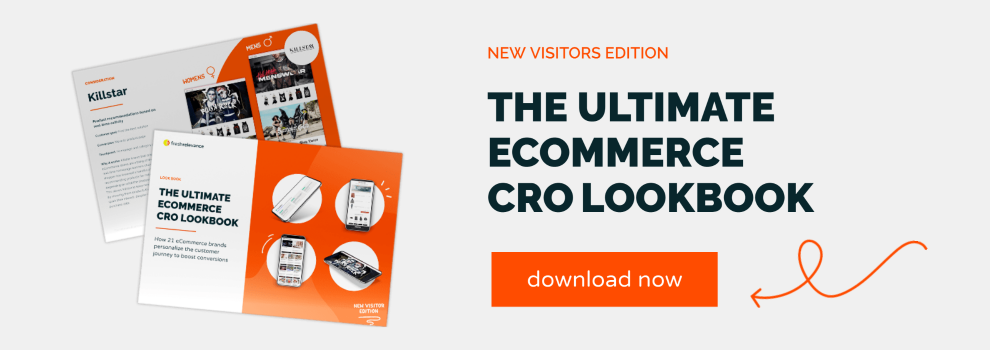The best food and beverage industry businesses convert more shoppers and encourage loyalty through tailored campaigns based on past purchase and browse data, making the online shopping and customer experience as easy as possible for their customers.
Read on to learn which tactics to use for your own food and beverage eCommerce store to create seamless, tailored experiences that result in more revenue, more online sales and happy customers, with real-life examples from four businesses in the online food and beverage industry.
1) Product recommendations
Product recommendations are a lucrative tactic for any eCommerce business, and can generate sales uplifts of up to 11%.
With many different types of product recommendations to choose from, it’s important to select the right tactic for your business. Here are a couple of ways food and beverage brands are using product recommendations.
Bestsellers
Including bestseller food and beverage products on the homepage and category pages can be particularly effective for online food stores, as without the ability to see products in the flesh, customers are more likely to be swayed by other shoppers’ opinions.
Oakhouse Foods combines this high-converting social proof and product recommendation tactic to increase their eCommerce sales on their category pages to inspire website visitors to check out their popular items.

Source: oakhousefoods.co.uk
Similar products
This tactic allows shoppers to see a range of alternative products similar to the one they’re browsing, allowing them to find the one that best suits their needs. For companies in the food and beverage sector who frequently add new or one-off products to their inventory, this tactic works well since you can immediately include recently added items to your recommendation strategy without any manual tagging or customer behavioral data.
The Scotch Malt Whisky Society suggests products that are similar to the product on the current page to inspire and guide the customer as they are browsing.

Source: smws.com
2) Social proof
Social proof helps marketers increase conversions by reassuring customers that they are buying the right product, with tactics including ratings and reviews, customer testimonials, and crowdsourced product recommendations.
Research shows that you should take social proof seriously as a digital marketing tactic. More than 1 in 3 customers won’t purchase if an online store doesn’t show product ratings and reviews.
Here’s how one successful beverage company uses social proof to boost conversions and encourage eCommerce growth.
Scarcity messaging
Displaying scarcity messaging signals to the shopper that this is a high demand product worth purchasing from your online business, and the added urgency speeds up the purchasing process and reduces click to purchase rate. Social proof tactics like scarcity messaging are proven to boost sales by up to 13%.
The Scotch Malt Whisky Society uses live purchasing and stock data to display how many items of a particular product are available.

Source: smws.com
3) Triggered emails
Triggered messaging is all about delivering personalized, real-time content to online shoppers at the moment they are most likely to convert. Shopping abandonment is one of the most popular tactics, triggered when a customer abandons a cart or leaves a browsing session without buying. Other triggered messaging tactics include back-in-stock emails and price drop alerts.
Here are a couple of ways food and beverage businesses are boosting sales with triggered emails.
Shopping abandonment
Timely cart and browse abandonment emails as part of your eCommerce strategy enable food and beverage industry companies to react to high-intent behavior, nurture their shoppers and boost revenue. Cart and browse recovery emails are a proven revenue booster, with the average Fresh Relevance client doing cart and browse abandonment emails achieving a sales uplift of 12%.
The food industry company Thorntons triggers cart abandonment emails to encourage shoppers to return to their site and complete their purchase. These triggered emails have proven successful for Thorntons, accounting for approximately 6% of all direct revenue.

Source: Thorntons email
Post-purchase emails
Effective eCommerce marketing doesn’t end when a customer buys your product. Food and beverage industry companies can maintain a strong relationship with shoppers by sending them post-purchase emails with relevant content once they’ve completed a purchase.
Penn Street Bakery is one of the online retailers who trigger emails to customers who have recently purchased items from their shop, requesting them to submit online reviews.
Reaching out for reviews allows Penn Street Bakery to keep in touch with their customers and potentially set up another purchase. Once reviews and ratings have been collected, Penn Street Bakery can add them in real time to their website and emails to help ease purchase anxiety and boost conversions.

Source: Penn Street Bakery email
4) Dynamic content
Dynamic content gives marketers the power to personalize every step of the customer journey to an individual’s preferences, behavior and real-time context. Each customer sees content that is timely and relevant, which in turn encourages clicks and sales.
Here’s how one food and beverage business uses dynamic content to convert more shoppers into customers.
Countdown timer
Countdown timers are an effective tool to build excitement and urgency, especially for big events on the food calendar such as Christmas.
Thorntons uses a countdown timer with a promotional message to encourage customers to make their purchases before their half price offer expires, increasing urgency and decreasing click to purchase as customers know they have a limited amount of time.

Source: Thorntons email
For more inspiration check out our Ultimate Ecommerce CRO Lookbook, packed with 21 real-life eCommerce personalization examples to increase your conversion rate.







